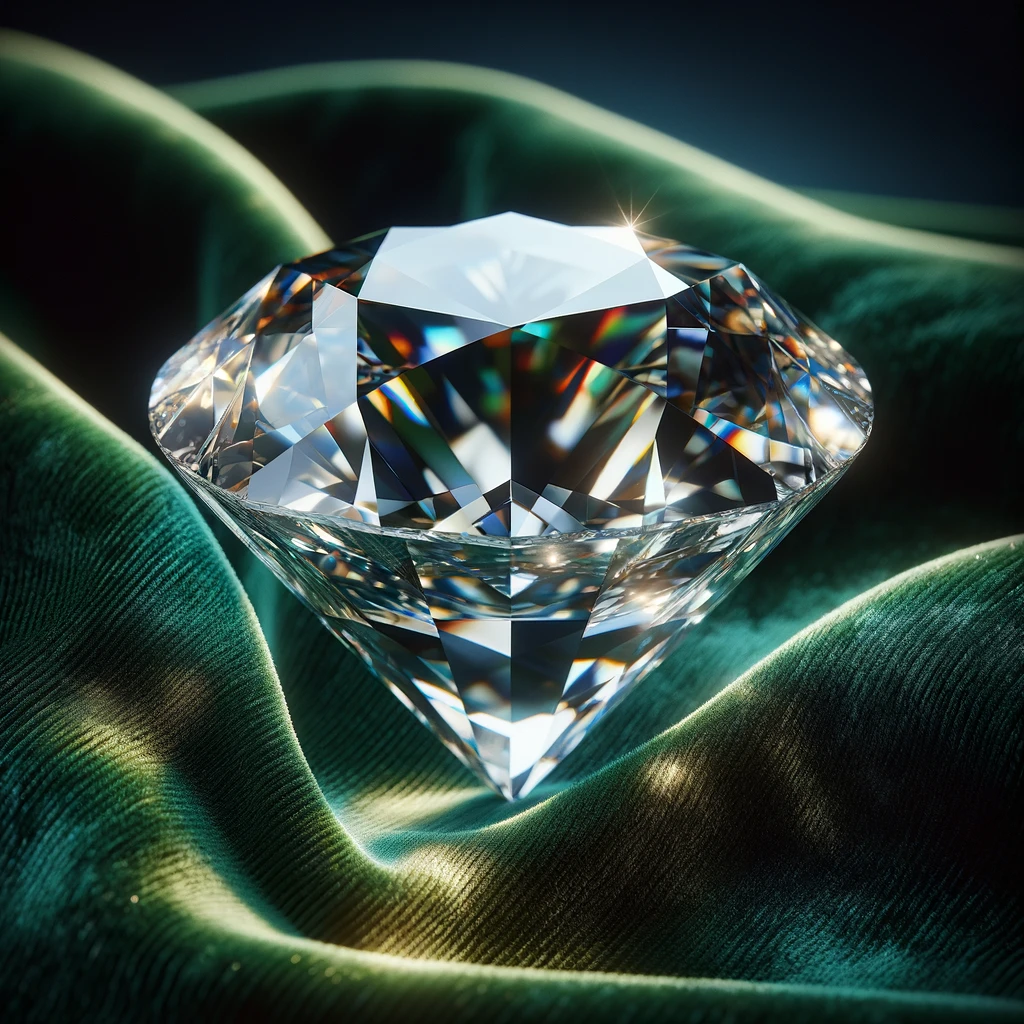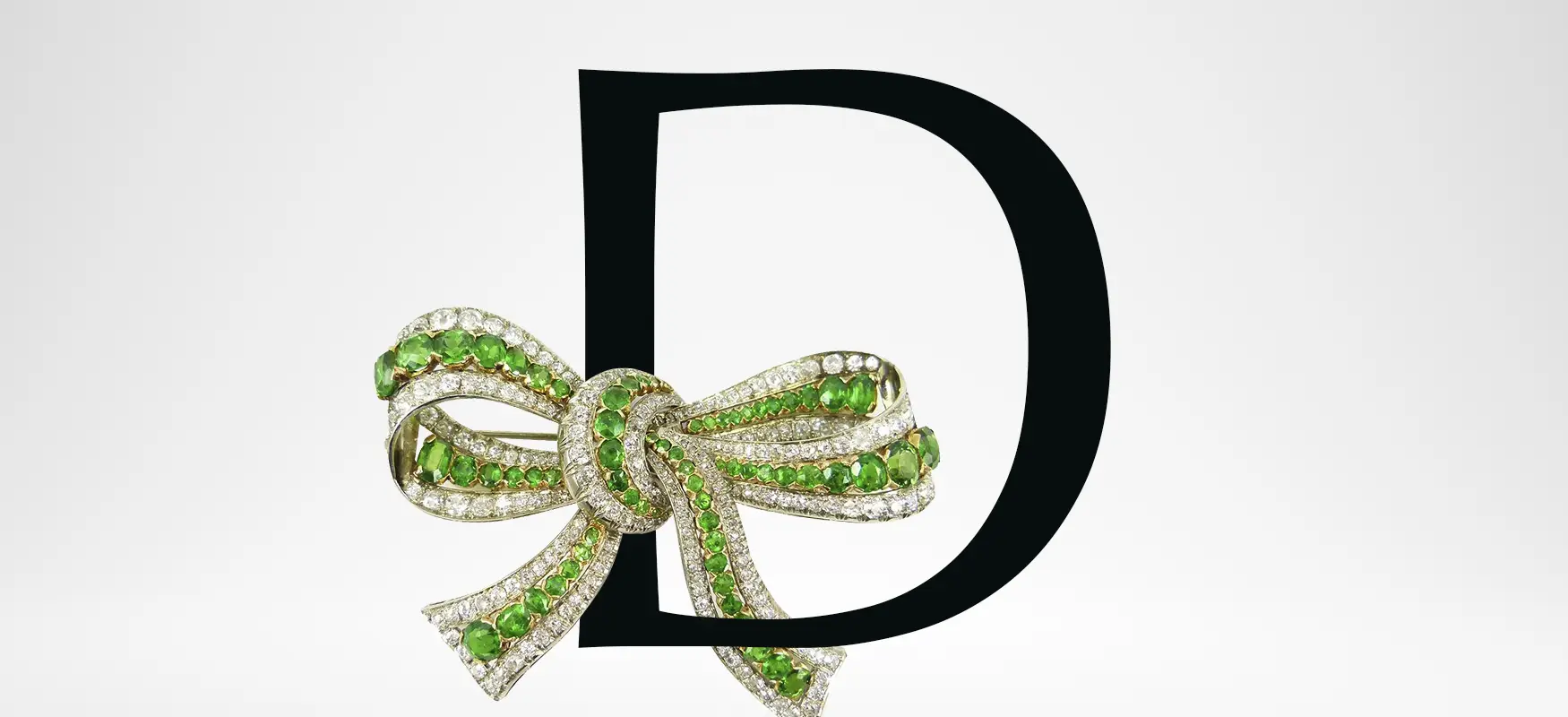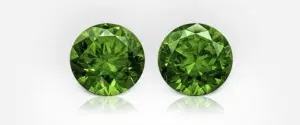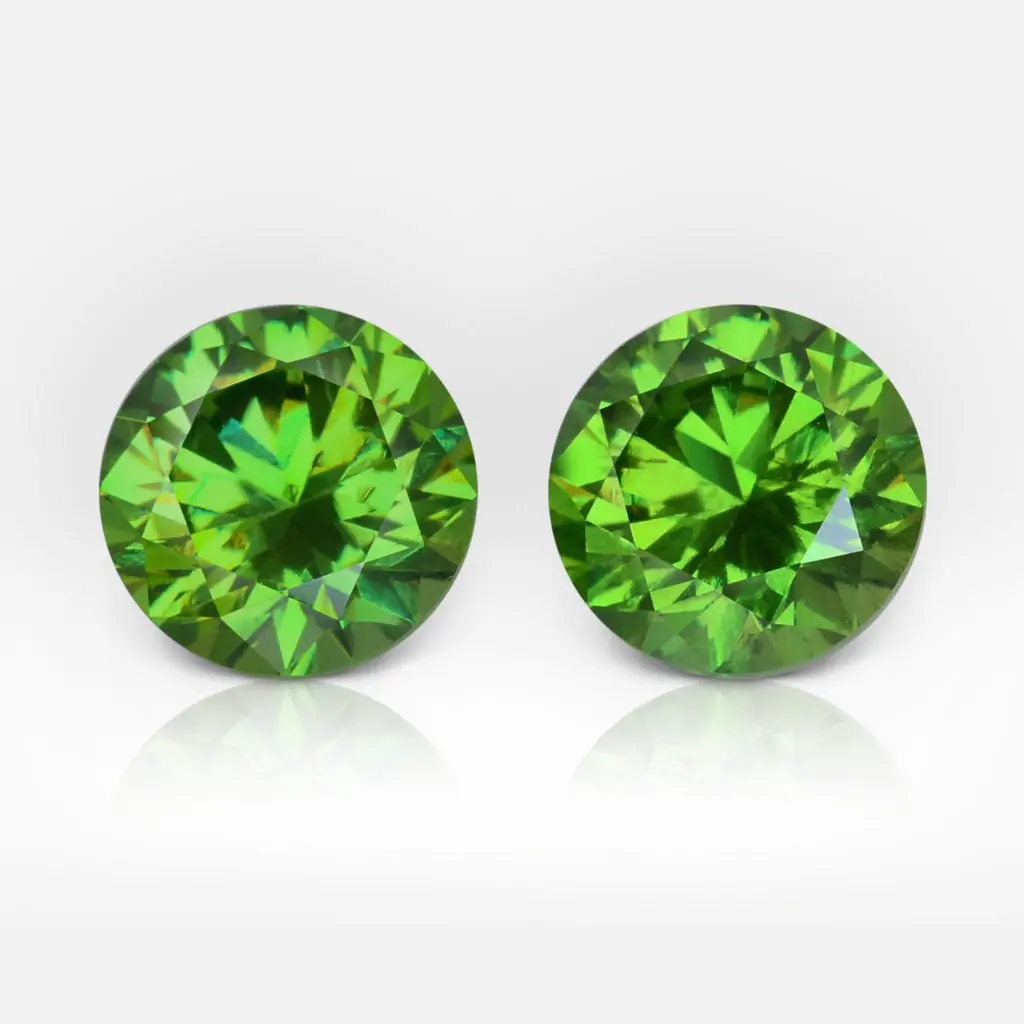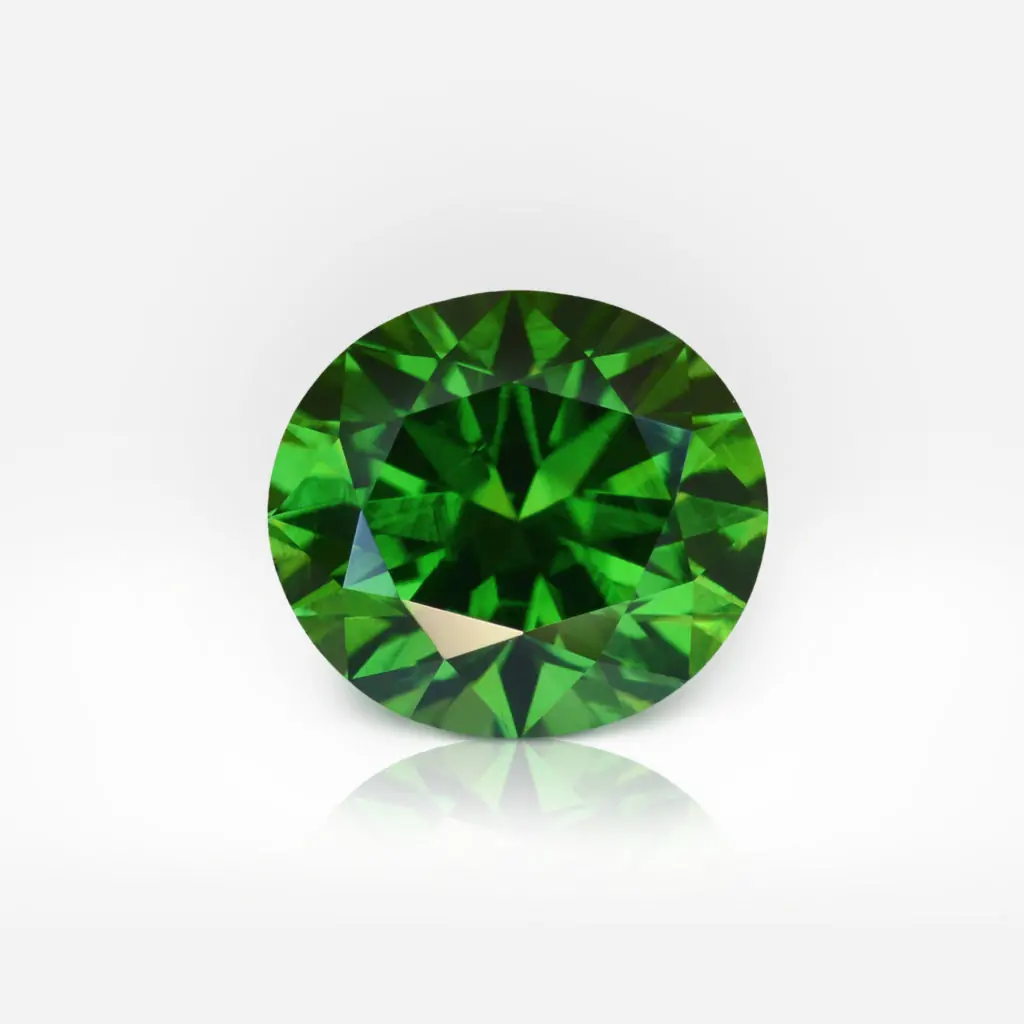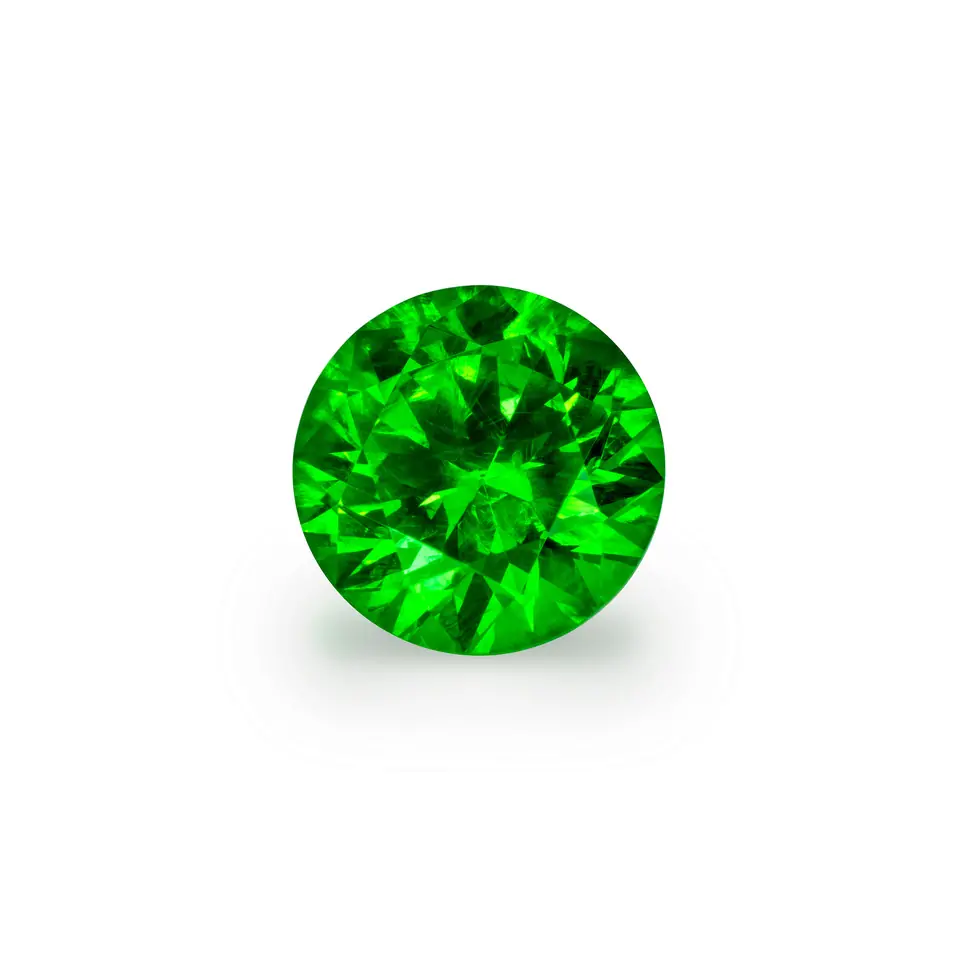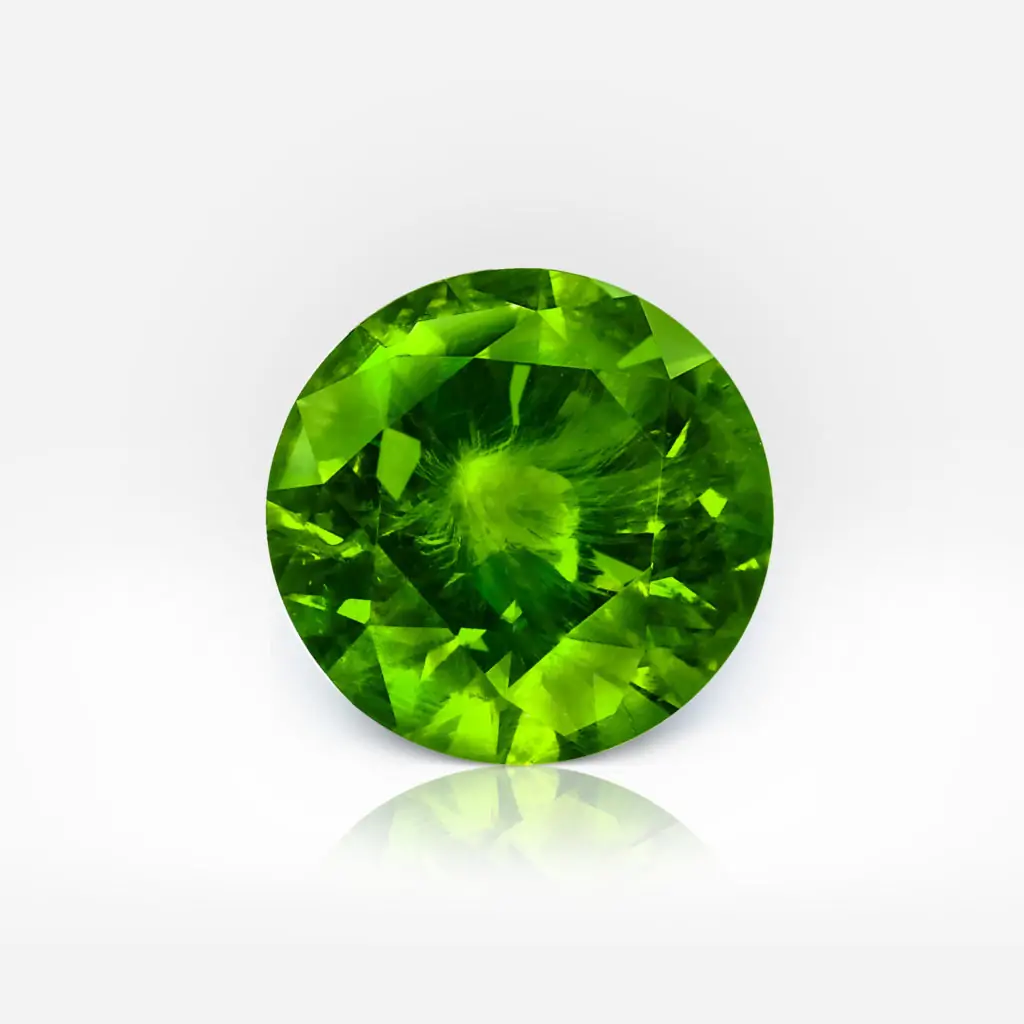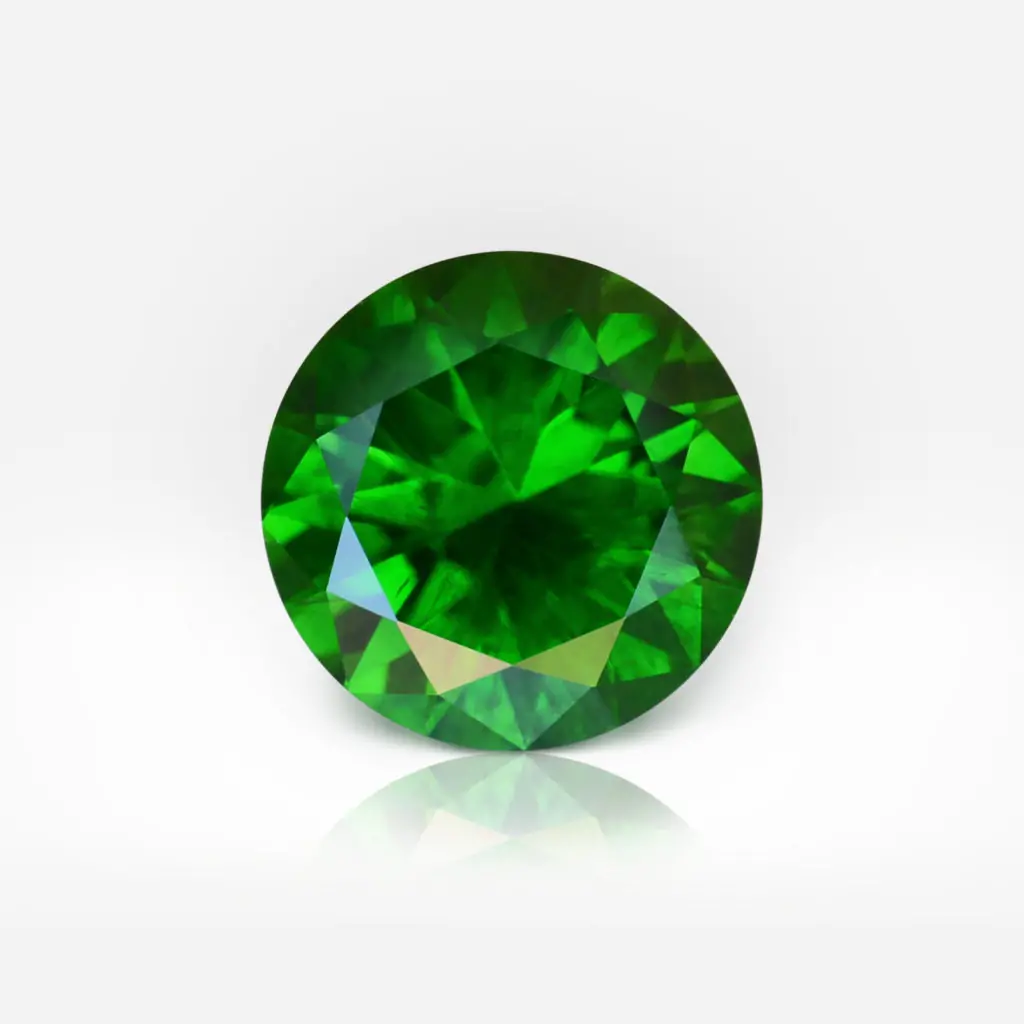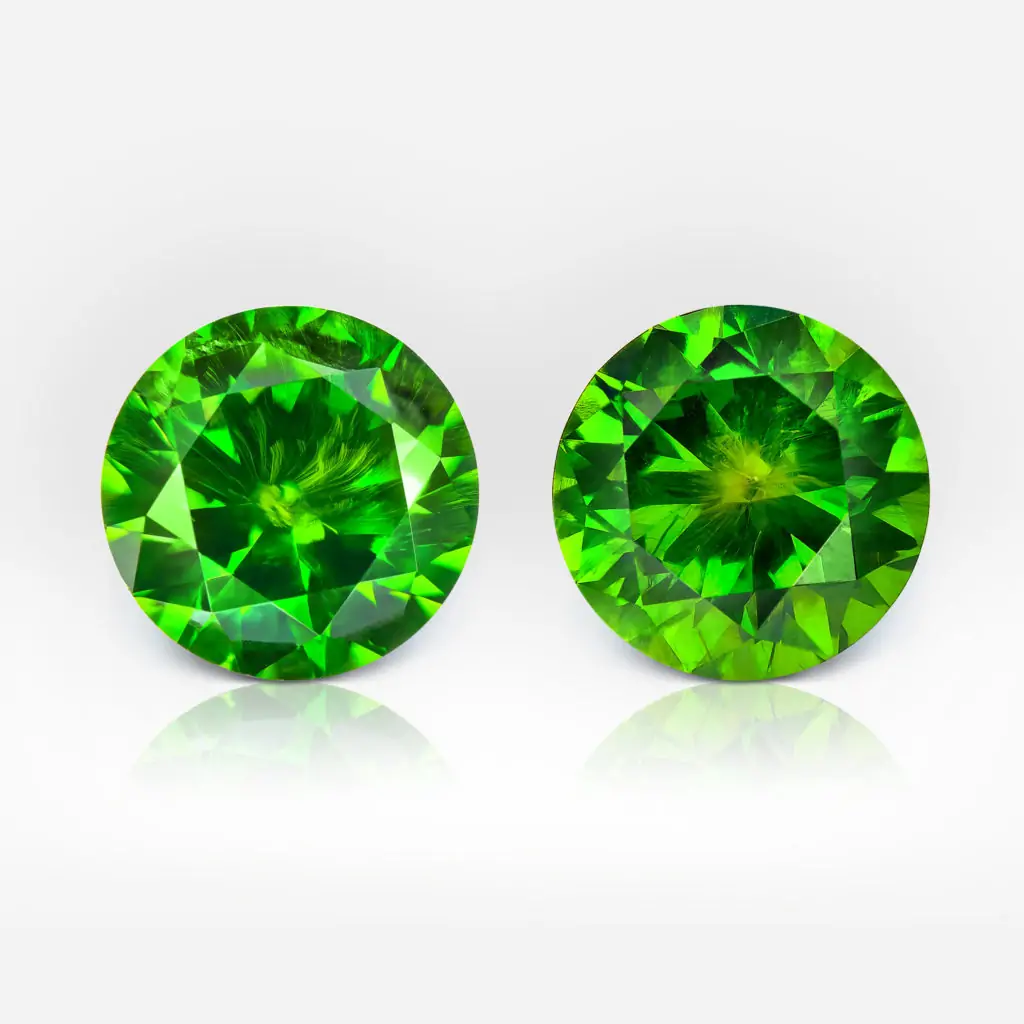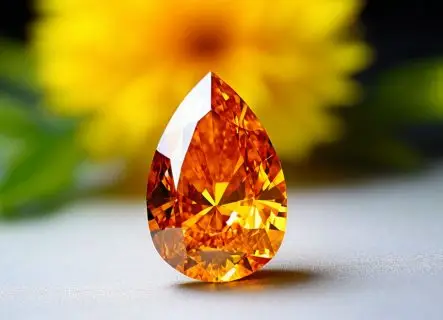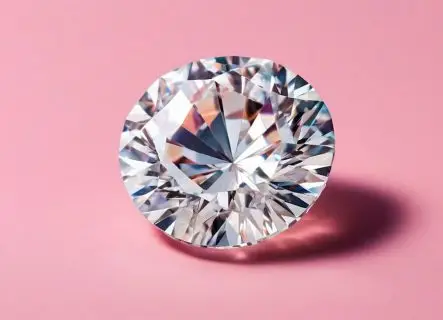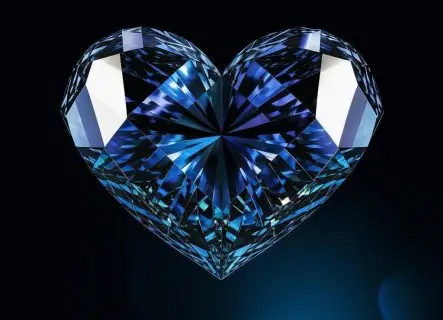The prolific garnet family gives birth to several gem varieties of an absolute different color spectrum. Among all garnet’s species one stands out in particular – it is even called the Czar of the garnet family – Demantoid.
Description
Demantoid is a green to yellowish green variety of andradite garnet, mostly found in the Russian Urals. The stones got their color from chromium and intrinsic iron. Demantoids stand out for their great brilliance and inner fire called dispersion.
Not only their color and “fire” make these stones unique – there is also an inclusion called horsetail. This feature is caused by radiating fibres of byssolite in a special horsetail pattern. Such inclusion is a distinctive sign of the most-sought Russian Demantoids. Since horsetail inclusion increases the gem’s value automatically, great Russian gems are considered to be the most expensive garnet’s variety and one of the rarest stones.
History
In the middle of the 19th century (about 1853), children from the settlement of Elizavetinskoye in the Central Urals, Russia, found strange pebbles of grass green color. Local jewelers identified them as chrysolite – or peridot. Gem lovers and mineral collectors from all over the country flocked to this settlement in search of unusual bright green stones called “Ural chrysolite”, “Siberian peridot” or even “Uralian emerald”. Very soon Demantoids appeared in the jewelry stores of Moscow and St.Petersburg.
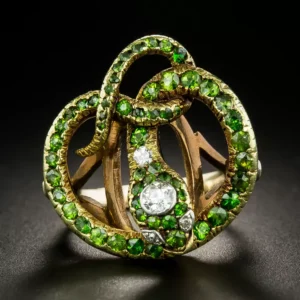
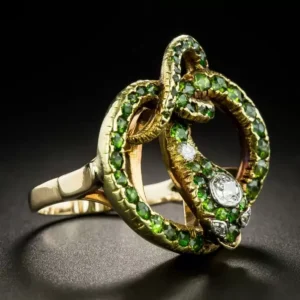
It was a Finnish mineralogist Nils von Nordensheld who first declared that the green stone is a new mineral and certainly not chrysolite. It happened a year after the initial discovery.
Due to the gem’s high refractive index and dispersion, it was named Demantoid, meaning “diamond’s like”. However, locals continued to call this stone “Ural chrysolite” for a long time.
The second discovery was made about 75km south of Ekaterinburg, on the west slopes of the Urals. Green gems there were as good as at the first location.
Demantoids quickly gained the love and popularity of the Russian nobility and the Imperial court. Some of them were incorporated into outstanding creations of Peter Carl Faberge, and a few were exported to the European gem market at an incredibly high price.
However, after the Bolshevik Revolution 1917, when all symbols of royalty and wealth were prohibited, precious stones – including Demantoids – became out of vogue. Fortunately, today these Russian gemstones are highly desired again.
Lucky charm
Being a variety of garnet, Demantoid inherits some of his magical properties.
Hundreds of years ago explorers and travelers carried a garnet with them, believing it is a talisman and protective stone that can light up the night and protect its bearer from evil and disaster. In Medieval times, garnets were thought to cure depression, protect against bad dreams, and relieve diseases.
Subscribe to discover the world of diamonds and gems. If you have any questions, please let us know.


